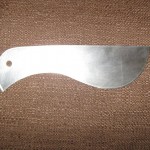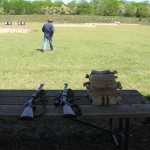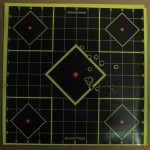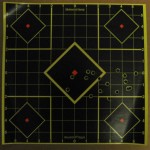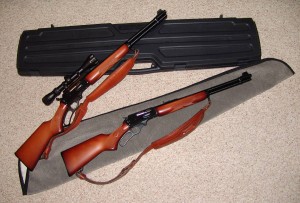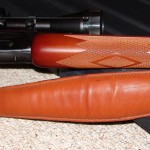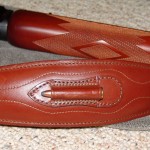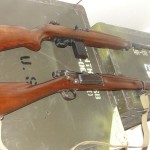 Okay so I went little nuts at the Chisholm Trail Antique Gun Show in Wichita Kansas last weekend. I bought five (count em) five guns! I sold two. An Enfield Jungle carbine .303 and a La Corunna Spanish carbine.
Okay so I went little nuts at the Chisholm Trail Antique Gun Show in Wichita Kansas last weekend. I bought five (count em) five guns! I sold two. An Enfield Jungle carbine .303 and a La Corunna Spanish carbine.
I’m left with a Yugoslavian SKS and a pristine Universal M1 carbine. I’ll probably sell or trade the SKS. The M1 I plan to hang onto.
The rifle that has really captured my heart however is the one rifle I almost passed on. I bought a US Springfield Model 1898, 30-40 Krag-Jorgenson. After the US government replaced the Krag with the Springfield model of 1903 (30-06) literally thousands of these fine old Krags were dumped on the market. The NRA obtained a large number of these rifles to sell through the NRA Civilian Marksmanship Program (CMP). The NRA had a number of these CMP Krags “sporterized” by bobbing the barrel to 25 inches and cutting the stock accordingly. AN NRA modified Krag could be purchased through the CMP in the 1930’s for between seven and twenty dollars. For many Americans this was the first opportunity to buy an affordable, bolt action, smokeless powder hunting rifle.
The Krag was prized by hunters for its reliability as well as low cost. To this day the Krag has the smoothest bolt action of any rifle ever produced. The 30-40 round was designed around a 220 grain bottle nosed bullet. At 2200 to 2400 feet per second this round could reliably crack the chest cavity of any North American Game animal.
I bought this rifle the Sunday morning of the gun show. In short order two men told me nostalgic tales of the first deer they ever killed. With a Krag rifle.
The Stauth Musem in Montezuma Kansas houses the mount of the largest elk ever killed until 1957. This elk was harvested with a 30-40 Krag (Man that’s a big elk!).
Ultimately the Krag is cherished to this day for the rifles legendary accuracy. The Krag was banned from military shooting competition soon after it was phased out. The other military weapons of the day simply could not compete (This might only be legend. But when legend meets fact, print the legend!).
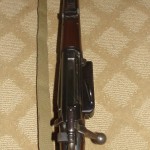 This is not to say the Krag did not have its drawbacks as a military firearm. The bolt of the Krag contains only a single locking lug instead of two. Hence the unbeatable smooth action of the Krag is inherently weaker than the Mauser and Enfield. The Krag magazine protrudes from the right side of the weapon. Consequently stripper clips can not be utilized for rapid reloading (Loading single rounds into a magazine in the heat of battle is a serious disadvantage!) Also the Krag magazine can only accommodate five rounds, a disadvantage in a military weapon competing with the Mauser (eight rounds) and the Enfield (ten rounds). The 1903 Springfield that replaced the Krag was closely copied from the Mauser design.
This is not to say the Krag did not have its drawbacks as a military firearm. The bolt of the Krag contains only a single locking lug instead of two. Hence the unbeatable smooth action of the Krag is inherently weaker than the Mauser and Enfield. The Krag magazine protrudes from the right side of the weapon. Consequently stripper clips can not be utilized for rapid reloading (Loading single rounds into a magazine in the heat of battle is a serious disadvantage!) Also the Krag magazine can only accommodate five rounds, a disadvantage in a military weapon competing with the Mauser (eight rounds) and the Enfield (ten rounds). The 1903 Springfield that replaced the Krag was closely copied from the Mauser design.
The Krag enjoyed a brief but colorful career in the US history of armed conflict. Krag carbines made the charge up Kettle (often wrongly identified as San Juan) hill in Cuba with Teddy Roosevelt. The Krag also fought the Spanish and the Morro in the Philippine conflict of the same time period.
The US Army Department of Ordinance, impressed by the performance of the Mauser held trials that led to the adoption of the 1903 Springfield.
Recent historians, relying on letters and journals written by soldiers and officers during the conflict find few complaints regarding the Krag and no ill comparison with the Mauser. US Soldiers often described favorably the powerful 30-40 cartridge to the opposition they encountered.
From my own perspective the CMP did a wonderful job in sporterizing the Krag. It feels handy. The twenty-five inch barrel is still rifle length, but definitely preferable to the original thirty inches. Other than being cut to half-stock the rifle maintains its original military dimensions. One can easily discern the original military design of the rifle but unlike most military weapons the Krag is quite slender. Due to the magazine protruding from the side of the rifle the weapon has an almost “needle gun” quality.
Perhaps I have seen too many Mauser’s and Enfield’s in movies depicting WWII and later. The Krag, elegant looking with its old world machinery exposed on one side looks like it belongs in the 19th instead of the twentieth century. In a line of weapons that includes the trapdoor, the Martini-Henry and the rolling block, the Krag looks more like what it is, a bridge to the Mauser’s, Enfield’s and Springfield’s that dominated martial conflict in the twentieth century.
My sporterized Krag seems more at home on safari in Victorian Africa or in an early twentieth century deer or elk camp than on a battle field in the time of mechanized warfare.
In closing I will say that a 30-40 Krag Jorgenson still in original military configuration will cost dearly beginning at around $1,000. A carbine will run over $2,000. An NRA CMP Krag might set you back between $500 and $700. I might mention the workmanship on these conversions is superb.
Ultimately if you enjoy vintage shooting with a rifle in a proven hunting cartridge, a sporterized Krag might just be the ticket!
The Lum
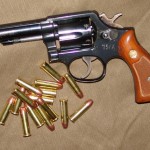 If you’ve read this blog for any length of time, you know that besides being avid hunters, we also collect firearms. Or wish we could collect firearms. Or wish we had the extra money to collect guns. But you get the point.
If you’ve read this blog for any length of time, you know that besides being avid hunters, we also collect firearms. Or wish we could collect firearms. Or wish we had the extra money to collect guns. But you get the point.
